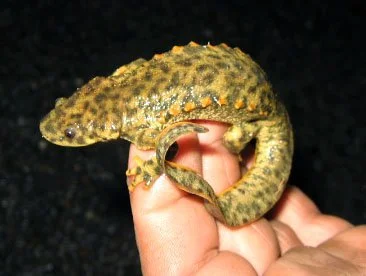When humans defend themselves, they fight back, scream, and run. All of these normal defense mechanisms in humans are commonplace. We’ve seen it in almost every movie and may have even seen it in person. But what about our animal counterparts? Typically, animals either fight or flee. Poisonous snakes deliver vicious venom, and deer flee the scene when they smell a potentially dangerous threat.
The most common defense mechanisms in nature seem to be animal mimicry, fighting back with sharp claws, and biting with powerful teeth that can tear away flesh. Animals developed these mechanisms to continue with their species and avoid predation, just as humans have. But there are other, less common defense mechanisms in nature used by unique animals. The hairy frog breaks its bones, the short-horned lizard squirts blood from its eyes, and wood frogs freeze themselves, to name a few.
Iberian Ribbed Newt Uses Its Ribs To Defend Itself

It’s one thing to use your fist to fight back, but it’s another thing to push your ribs out through your skin and use them to defend yourself. That’s exactly what this frog, the Iberian Ribbed Newt, does. It becomes immobile, enlarges its body, and pushes its ribs through tubercles on the side of its body to ward off attackers.
Even though the skin rips through its flesh, it doesn’t cause the newt any pain. It angles its ribs up to fifty degrees, stretches its bones, and rips through its flesh. Then, it secretes a poisonous milky substance through its pores, where it pokes its enemy and kills it. And these ribs don’t leave the same spot every time as scientists previously thought. Every time the newt is under threat, the ribs exit from different pores (Journals Biologists).
